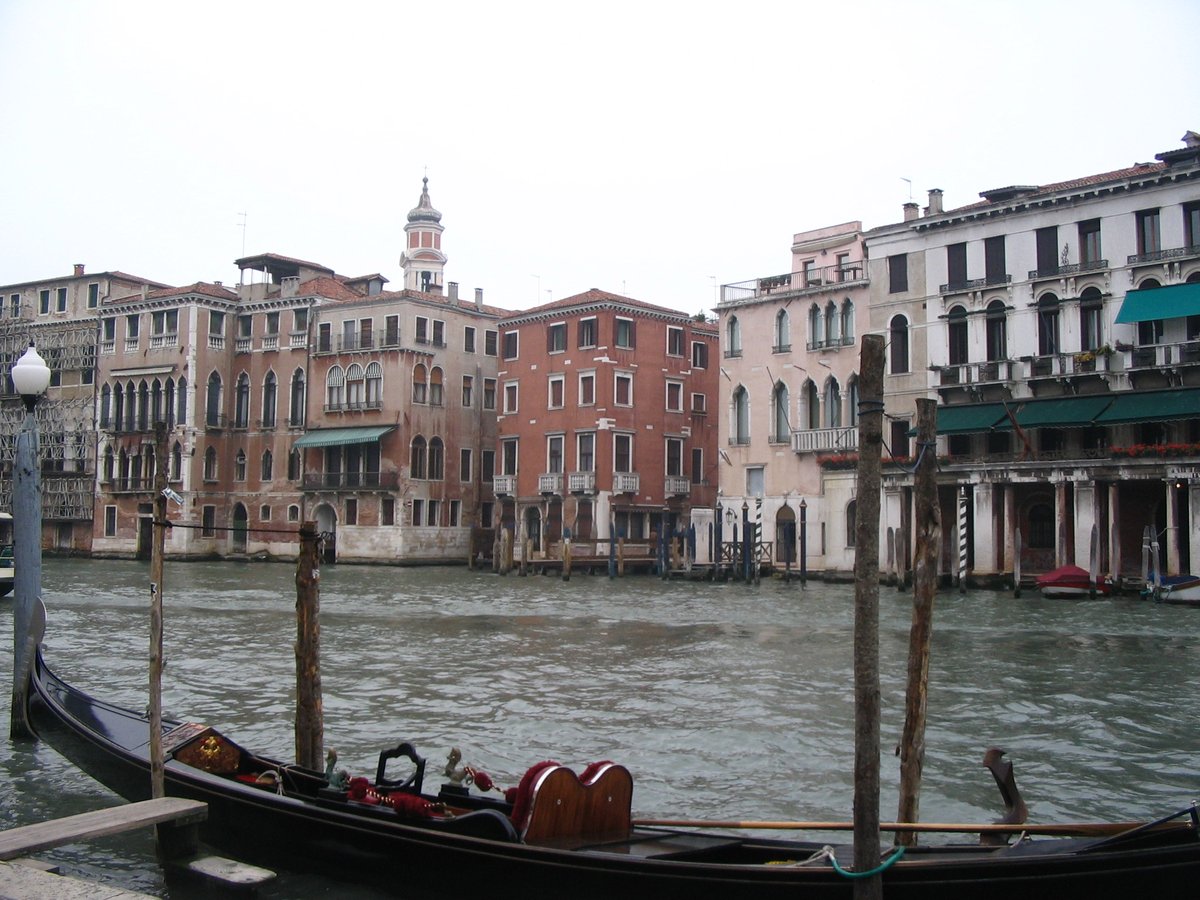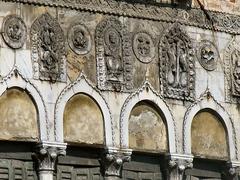
Ca’ Da Mosto Venice: Visiting Hours, Tickets, and Historical Sites Guide
Date: 14/06/2025
Introduction to Ca’ Da Mosto Venice
Rising majestically on the Grand Canal near the Rialto Bridge, Ca’ Da Mosto is the oldest surviving palazzo in Venice and a remarkable portal into the city’s rich mercantile and artistic past. Dating back to the early 13th century, this Venetian-Byzantine architectural jewel offers visitors a vivid journey through centuries of trade, culture, and innovation. Originally a casa-fondaco—combining warehouse and noble residence—the palazzo was long the seat of the Da Mosto family, whose most famous scion, the explorer Alvise Cadamosto, helped expand Venice’s maritime horizons.
In recent years, Ca’ Da Mosto has been meticulously restored and reborn as The Venice Venice Hotel, fusing its medieval fabric with contemporary art and design. Today, it serves both as a luxury hospitality space and a dynamic cultural hub, hosting curated exhibitions, innovative dining, and immersive events that bring new life to ancient walls.
This guide offers detailed information on Ca’ Da Mosto’s history, visiting hours, ticketing options, accessibility, and nearby attractions—helping you experience one of Venice’s most iconic and enduring landmarks. For the latest updates and visitor details, always refer to the official Venice Venice Hotel website (Ca’ Da Mosto: Venice’s Oldest Palazzo; Amazing Architecture; Wallpaper*).
Table of Contents
- Introduction
- Historical Overview
- Architectural Significance and Style
- Restoration and Adaptive Reuse
- Fusion of Heritage and Contemporary Art
- Visiting Ca’ Da Mosto: Essential Information
- Practical Visitor Insights
- Nearby Attractions
- Seasonal Considerations
- Amenities and Experiences at The Venice Venice Hotel
- FAQ
- Conclusion
- Sources
Historical Overview
Origins and Early Development
Constructed in the early 13th century, Ca’ Da Mosto is recognized as the Grand Canal’s oldest palazzo. It exemplifies Venetian-Byzantine style, blending Eastern and Western elements, with high, narrow arches, ornate capitals, and a water-facing portico designed for direct unloading of goods—demonstrating Venice’s role as a commercial powerhouse (GoParoo).
The Da Mosto Family and Notable Residents
The Da Mosto family acquired the palazzo in 1266. Among their ranks was Alvise Cadamosto, an explorer whose voyages under Prince Henry the Navigator opened new horizons for European trade and navigation. The palazzo remained with the family until 1603, when it passed to Leonardo Donà dalle Rose, a future Doge of Venice (Facaros & Pauls).
Transformation into a Hotel: The Leon Bianco Era
In the 16th–18th centuries, Ca’ Da Mosto became the Albergo Leon Bianco (White Lion Hotel), one of Venice’s earliest hotels. It hosted luminaries such as Emperor Joseph II, Voltaire, Mozart, and Shelley, cementing its reputation as a crossroads for aristocrats and artists (Wallpaper*).
Architectural Evolution and Preservation
Through centuries, Ca’ Da Mosto expanded and evolved, yet retained its Venetian-Byzantine character. Notable features include its signature six-light window, Byzantine marble decorations, and stratified floors for commerce and residence (GoParoo).
Decline, Restoration, and Rebirth
After a long period of neglect, a five-year restoration began in the 21st century. The project preserved original elements—Byzantine exteriors, brass fittings, and the iconic staircase—while introducing modern amenities and sustainable technologies (Amazing Architecture).
Architectural Significance and Style
Ca’ Da Mosto stands as a rare example of Venetian-Byzantine architecture, marking the transition from Romanesque to Gothic. Its canal-facing façade features polychrome marble, pointed arches, and ornate column capitals. The ground-floor portico—once used for commerce—reflects Venice’s tradition of “feet in the water” architecture (GoParoo).
Internally, the layout mirrors the classic Venetian model:
- Ground Floor: Warehouse and canal access.
- First Floor (Piano Nobile): Offices and reception.
- Upper Floors: Residential quarters.
The rear façade is more austere, opening onto a small courtyard with a triple lancet window and external staircase.
Restoration and Adaptive Reuse
The restoration philosophy focused on minimal, reversible interventions, revealing the palazzo’s historic patina while ensuring structural integrity. Notable features include a mirror frame crafted from 500-year-old clay and careful reconstruction of the Venetian staircase (Amazing Architecture).
Fusion of Heritage and Contemporary Art
Today, Ca’ Da Mosto is a vibrant cultural hub. The Venice Venice Hotel’s founders, Francesca Rinaldo and Alessandro Gallo, have curated an eclectic collection of contemporary artworks—such as Fabio Viale’s “Piet Senza Cristo” and a 1985 Jannis Kounellis installation—set against the backdrop of ancient walls (Wallpaper*). This “post-Venetian” vision celebrates the building as a meeting point for creativity and innovation.
Visiting Ca’ Da Mosto: Essential Information
Location and Getting There
- Address: Calle Ca’ da Mosto, Cannaregio 5643, 30121 Venezia VE, Italy
- Nearby vaporetto stops: Rialto (Lines 1 & 2), Ca’ d’Oro
- Nearby landmarks: Rialto Bridge, Rialto Market, Piazza San Marco
Visiting Hours
- Hotel Guests: 24/7 access to all hotel areas.
- Non-Guests: Access to public areas such as the restaurant, boutique, and events is available during opening hours (typically 10:00 AM–7:00 PM; restaurant and bar open until midnight). For up-to-date schedules and special events, check the official website.
Tickets and Booking
- General Admission: There are no standard tickets for casual entry; public access is typically limited to those with dining or boutique reservations.
- Special Events: Art exhibitions or cultural happenings may be open to the public—check the website for details.
- Guided Tours: Occasionally offered; inquire in advance for availability.
Accessibility
- The palazzo has been upgraded for improved accessibility, but due to its medieval structure, some areas remain challenging. Contact the hotel for specific accommodations.
Amenities and Experiences at The Venice Venice Hotel
- Rooms & Suites: Individually designed, with unique art and Grand Canal views.
- Dining: Market-inspired Venetian cuisine (reservations recommended for non-guests).
- Boutique: Curated Venetian crafts and design.
- Rooftop Terrace: Panoramic city and canal views (access by reservation).
- Spa: Venetian-inspired wellness treatments for hotel guests.
Practical Visitor Insights
- Booking: Reserve accommodations, dining, or event attendance in advance—especially during high season (Carnival, Biennale).
- Dress Code: Smart casual is recommended.
- Photography: The exterior, porticoes, and canal views are popular for photos; respect guest privacy indoors.
- Sustainability: The restoration incorporates energy-efficient systems and supports local artisans.
Nearby Venice Historical Sites
- Rialto Bridge: Iconic stone bridge steps away.
- Rialto Market: Vibrant market for seafood and produce.
- Ca’ d’Oro: Notable palazzo with art museum.
- Piazza San Marco: St. Mark’s Basilica, Doge’s Palace, and the Campanile.
- Palazzo Grassi & Punta della Dogana: Contemporary art centers.
Seasonal Considerations
- Carnival (Feb–Mar): High visitor demand; book early.
- Biennale (May–Nov): Art and architecture exhibitions; special events possible.
- Acqua Alta: High water in autumn/winter; hotel equipped with flood barriers.
Frequently Asked Questions (FAQ)
Can non-guests visit Ca’ Da Mosto?
Yes, by booking dining or boutique experiences; no general public entry without reservation.
What are Ca’ Da Mosto’s visiting hours?
Public areas are typically open from 10:00 AM to 7:00 PM; check the official website for updates.
Are guided tours available?
Occasionally, by advance arrangement or during special events.
Is Ca’ Da Mosto wheelchair accessible?
Some public areas are accessible; contact the hotel for specific assistance.
What are the best times to visit?
Spring and autumn offer pleasant weather and fewer crowds.
Visuals and Resources
- High-quality images of Ca’ Da Mosto’s façade, interiors, and art installations are available on the official site.
- Interactive maps and virtual tours may be available online.
Conclusion
Ca’ Da Mosto is a living testament to Venice’s enduring spirit, seamlessly blending centuries of history with contemporary creativity. Whether you admire its Byzantine arches from the Grand Canal, attend a cultural event, or enjoy a meal in its storied halls, Ca’ Da Mosto offers a uniquely Venetian experience. For the latest information on visiting hours, events, and reservations, consult the Venice Venice Hotel official website.
Download the Audiala app for curated travel guides and insider tips, and follow us for more in-depth content on Venice’s architectural and cultural treasures.
Sources and Further Reading
- Ca’ Da Mosto: Venice’s Oldest Palazzo – History, Visiting Hours, Tickets & Travel Tips (2024)
- Ca’ Da Mosto Venice: Visiting Hours, Tickets & Architectural History of a Historic Venetian Palace (2024)
- The Venice Venice Hotel: Dynamic, Evocative, Audacious and Avant-Garde (2024)
- Ca’ Da Mosto Venice: Visiting Hours, Tickets, and Historical Significance (2024)
- Ca’ Da Mosto – Venetian Architecture and Art Culture (2024)













































































































